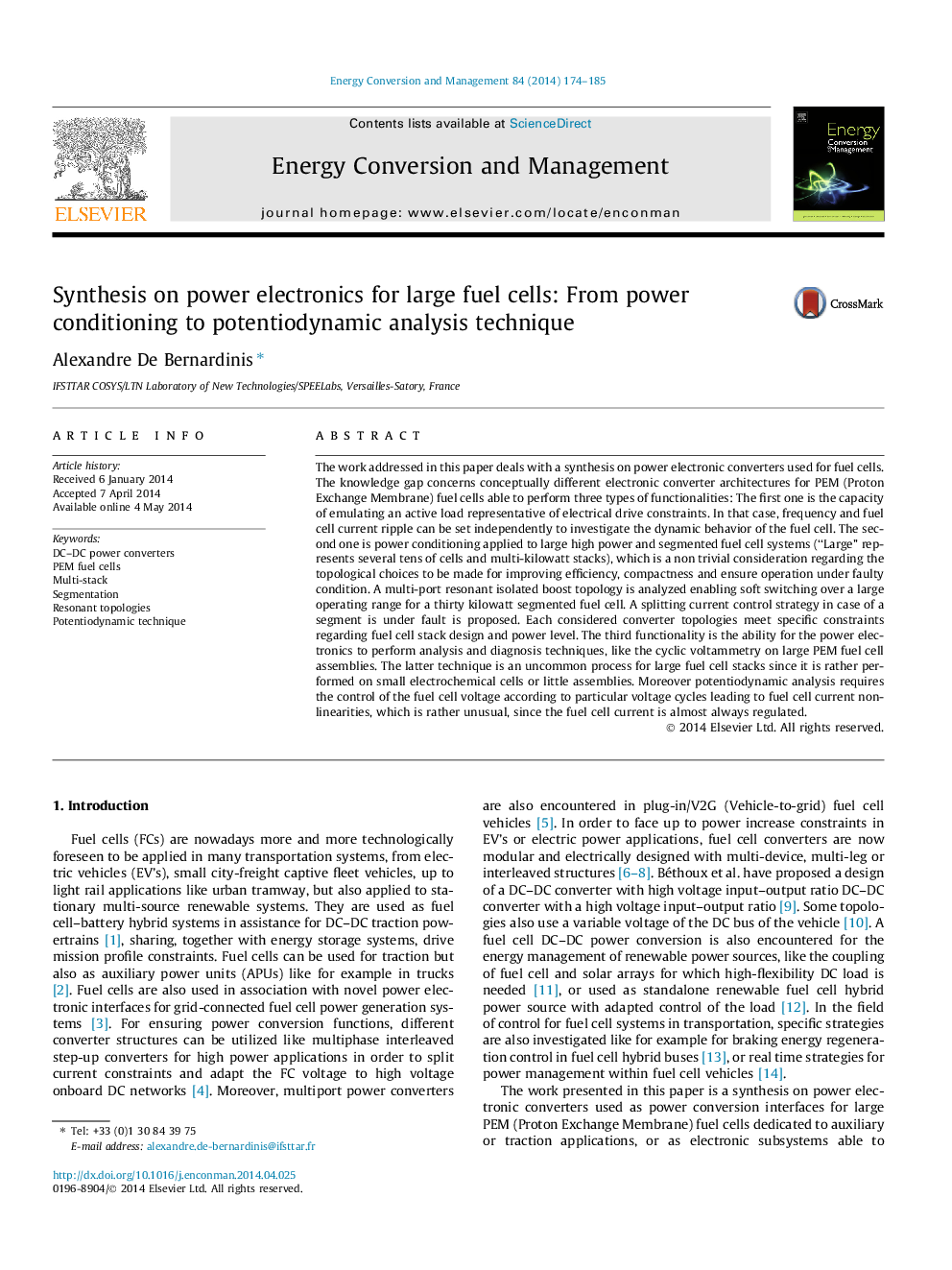| کد مقاله | کد نشریه | سال انتشار | مقاله انگلیسی | نسخه تمام متن |
|---|---|---|---|---|
| 763818 | 1462878 | 2014 | 12 صفحه PDF | دانلود رایگان |
• Active load for fuel cell managing electrical drive constraints: frequency and current ripple can be adjusted independently.
• Multi-port resonant soft-switched topology for power management of a thirty kilowatt segmented PEM fuel cell.
• Splitting current control strategy for power segmented PEM fuel cell in case of a segment is under fault.
• Reversible Buck topology for large fuel cell with control of the fuel cell potential linked to current density nonlinearity.
The work addressed in this paper deals with a synthesis on power electronic converters used for fuel cells. The knowledge gap concerns conceptually different electronic converter architectures for PEM (Proton Exchange Membrane) fuel cells able to perform three types of functionalities: The first one is the capacity of emulating an active load representative of electrical drive constraints. In that case, frequency and fuel cell current ripple can be set independently to investigate the dynamic behavior of the fuel cell. The second one is power conditioning applied to large high power and segmented fuel cell systems (“Large” represents several tens of cells and multi-kilowatt stacks), which is a non trivial consideration regarding the topological choices to be made for improving efficiency, compactness and ensure operation under faulty condition. A multi-port resonant isolated boost topology is analyzed enabling soft switching over a large operating range for a thirty kilowatt segmented fuel cell. A splitting current control strategy in case of a segment is under fault is proposed. Each considered converter topologies meet specific constraints regarding fuel cell stack design and power level. The third functionality is the ability for the power electronics to perform analysis and diagnosis techniques, like the cyclic voltammetry on large PEM fuel cell assemblies. The latter technique is an uncommon process for large fuel cell stacks since it is rather performed on small electrochemical cells or little assemblies. Moreover potentiodynamic analysis requires the control of the fuel cell voltage according to particular voltage cycles leading to fuel cell current nonlinearities, which is rather unusual, since the fuel cell current is almost always regulated.
Journal: Energy Conversion and Management - Volume 84, August 2014, Pages 174–185
